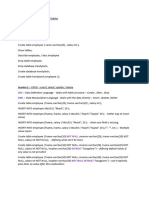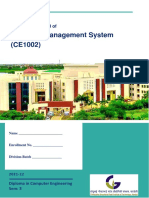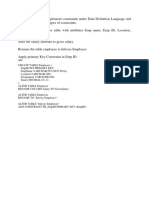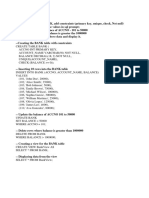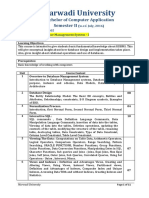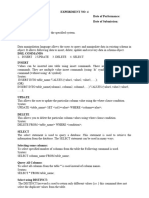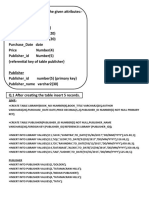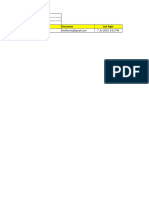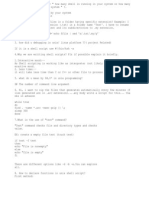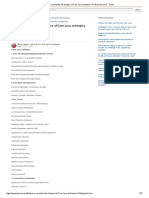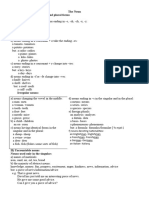0% found this document useful (0 votes)
20 views28 pagesAkdbms
The document outlines a series of practical exercises for a Database Management System (DBMS) course, focusing on creating and manipulating tables in Oracle Express. It includes tasks such as implementing constraints, inserting data, querying tables, and performing various operations like joins and subqueries. The exercises cover topics like account management, employee data handling, and course registration systems.
Uploaded by
dewanshbinjola23Copyright
© © All Rights Reserved
We take content rights seriously. If you suspect this is your content, claim it here.
Available Formats
Download as DOCX, PDF, TXT or read online on Scribd
0% found this document useful (0 votes)
20 views28 pagesAkdbms
The document outlines a series of practical exercises for a Database Management System (DBMS) course, focusing on creating and manipulating tables in Oracle Express. It includes tasks such as implementing constraints, inserting data, querying tables, and performing various operations like joins and subqueries. The exercises cover topics like account management, employee data handling, and course registration systems.
Uploaded by
dewanshbinjola23Copyright
© © All Rights Reserved
We take content rights seriously. If you suspect this is your content, claim it here.
Available Formats
Download as DOCX, PDF, TXT or read online on Scribd
/ 28
